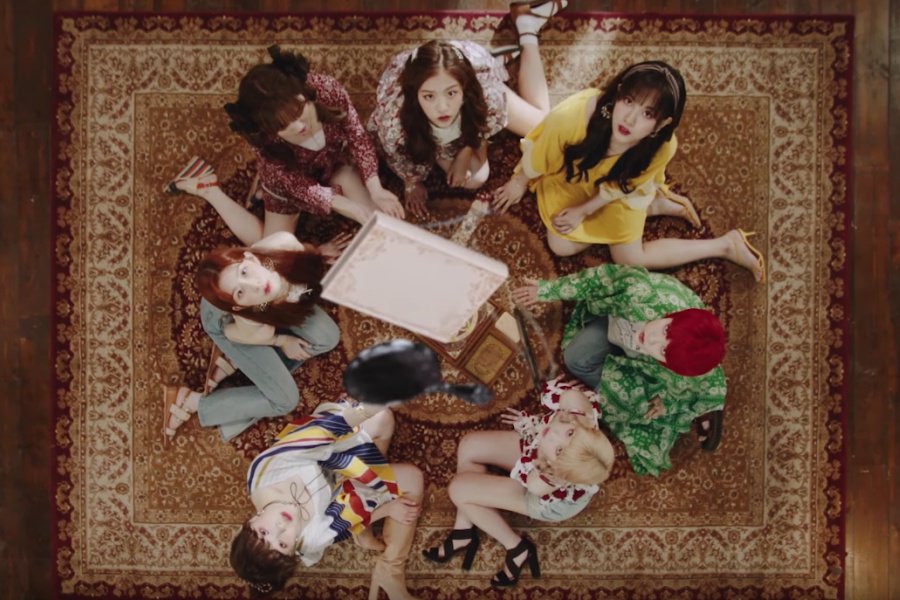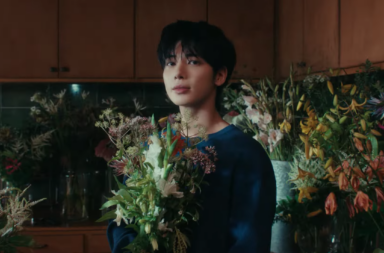
The multi-national GWSN (Girls in the Park) returns with “Red-Sun(021)”, further showcasing their potential by harnessing the elements that make them stand out, either by uniqueness or execution. Their cosmic-mythological theme is as present as ever, driving their visuals along with the unique, strange, and well-executed choreography. Mysticality and musicality radiate hand in hand from this release, exemplifying the necessity of cohesive multimedia. It’s a worthy next step — a step-up, even — from what they have put out before; it’s a clear sign of potential in a sea of undifferentiated rookies.
Indeed, the mystical theme is common, but it’s the execution and attention to detail that marks their success. Loona’s popularity is in many ways reliant on the development of their conceptual storyline. Just like in literature, world-building can be enriching — but it is not always necessary.
Much of what GWSN has accomplished in “Red-Sun” is reliant upon their use of motifs. Following the color-coded natural themes of their previous releases, there are nods to real mythologies, particularly Greek and Nordic. The MV, however, uses the isle of Sarpedon and what could be Yggdrasil as side commentary, focusing on a canon specific to GWSN: the activation of some cryptic ritual.

Naturally, coming as a conclusion to their Park In The Night trilogy, GWSN have acquired — through the different scenarios — the elements required to make the wonderland “Red-Sun” box work. These elements are vanity elements which are traditionally associated with women. Beyond this, the only clear narrative point is how they need each other. When Lena tries to independently complete the ritual, she’s unable to and is thrown off her seat; she is only successful when with the other members.
It’s a wholesome and relevant message that, for some reason, becomes obfuscated under the incohesive and unfollowable narrative. The MV opts for disparate symbolism and motifs that merely serve to dazzle. However, this makes the narrative aspect of the MV no more than an accessory to the gorgeous visuals and unique choreography. Nonetheless, beautiful backdrops and slightly obvious CGI work to make the MV successful even as the narrative remains unclear.
Better executed, however, is the song, which takes center stage. Undoubtedly, “Red-Sun” is one of the most unique upbeat songs I’ve heard lately; it’s bubbly in a usual K-pop way while managing to stand out with vocal hooks. Melodically, it recalls the likes of Twice, but differentiates itself with addictive elements like the pre-choral counting and playful modal changes that precede. Likewise, the accompanying choreography — best described by the equally hooking “watch my fingers” line — becomes a central complement to the song and its pace.

Mostly, it stands out for being a balanced track — both in a technical and organizational way. It’s one of the better K-pop mixes: it doesn’t disregarding the mastering of the song and avoids over-emphasizing specific elements. It balances the upbeat elements of the track with the lower, synth-driven backing track well. In this aspect, it is one of the few K-pop songs which takes advantage of imaging and sound-positioning. The vocal distribution is also remarkable, not in terms of “fairness”, but in that the unique voices of maknae Lena and androgynous rapper Miya — noted by some to be similar to f(x)’s Amber — breathe life back into “Red-Sun” just before it becomes stale.

The most important thing for a young group is to differentiate themselves. GWSN’s work is exemplary in view of the myriad groups trying to enter the mainstream K-pop scene. At a time when there can only be so many “big” groups, GWSN stands with a distinct identity despite the continuous comparisons with groups like Loona and f(x). They have the talent, and I hope they take conceptual care in what they produce next. A misstep this early on is all that it takes to not go further.
(YouTube. Images via Kiwi Pop)


